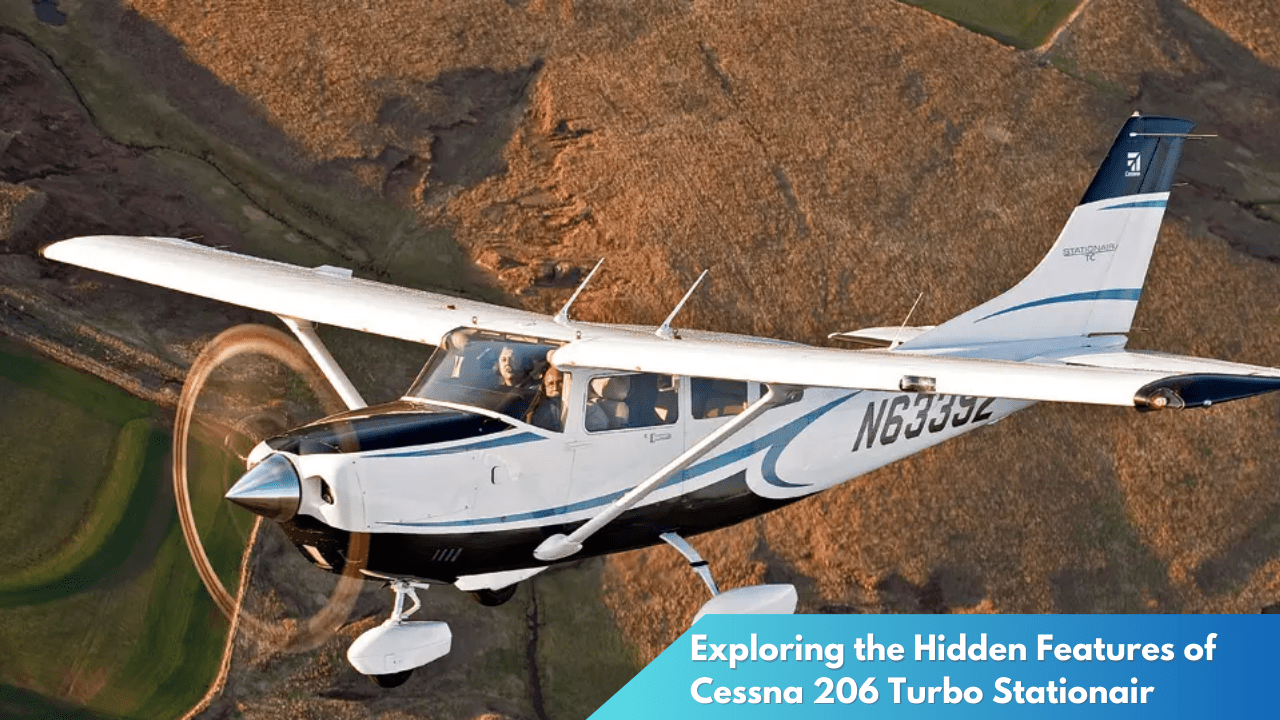Exploring the Hidden Features of Cessna 206 Turbo Stationair
The Cessna 206 Turbo Stationair has long been celebrated for its versatility and reliability, making it a popular choice among pilots worldwide. Often dubbed the “sport-utility vehicle of the skies,” this single-engine plane is built to handle diverse missions, from family vacations to cargo transport and medical evacuations. While much of its appeal lies in its robust performance and capability, the aircraft also boasts a range of hidden features that enhance the flying experience. This article delves into some of these lesser-known attributes, shedding light on what truly sets the Cessna 206 Turbo Stationair apart.
Unveiling the Cessna 206 Turbo Stationair’s Secrets

The Cessna 206 Turbo Stationair’s design prioritizes adaptability, making it a standout aircraft in various aviation circles. Beneath its familiar exterior lies a cavernous interior capable of accommodating up to six passengers or a significant amount of cargo. The plane’s 1,200-pound carrying capacity enables pilots to tackle a wide range of missions without worrying about payload limitations. Notably, its large double cargo doors facilitate easy loading and unloading, a feature that, while visible, often goes unnoticed in terms of its impact on operational efficiency.
Another secret of the Turbo Stationair is its impressive short takeoff and landing (STOL) capabilities. This aircraft can operate in and out of short, unpaved runways with ease, a trait that expands its usability in remote or challenging environments. The combination of a high-lift wing design and robust landing gear allows the Turbo Stationair to access destinations beyond the reach of more traditional aircraft. This ability not only enhances the operator’s flexibility but also opens up new opportunities for adventure and utility flights.
One of the more subtle yet crucial features of the Cessna 206 Turbo Stationair is its advanced avionics suite. While often overshadowed by the plane’s rugged functionality, the inclusion of the Garmin G1000 NXi integrated flight deck offers pilots a modern, intuitive flying experience. This state-of-the-art system provides real-time data and a wealth of other features that improve situational awareness, navigation, and safety. The G1000 NXi’s capabilities ensure pilots can focus on the mission at hand, whether it’s a scenic flight over rugged terrain or a precise approach into a challenging airstrip.
Discover the Hidden Features Elevating Your Flight

Comfort is a critical aspect of any flight, and the Cessna 206 Turbo Stationair doesn’t disappoint in this regard. The aircraft comes equipped with a redesigned cabin that prioritizes passenger convenience and enjoyment. Enhanced soundproofing reduces engine noise, creating a quieter and more relaxing environment for those on board. Additionally, the ergonomic seating and ample legroom are designed to make long journeys more comfortable, a detail that might be overlooked at first glance but is greatly appreciated by passengers during extended flights.
Engine performance is another area where the Turbo Stationair excels, thanks in part to its turbocharged Lycoming TIO-540-AJ1A engine. This powerhouse allows the aircraft to maintain high performance at altitudes where naturally aspirated engines might struggle. As a result, the Turbo Stationair can fly higher and faster, enhancing fuel efficiency and reducing travel time. These hidden benefits contribute significantly to the aircraft’s operational prowess, ensuring it can meet the diverse demands of modern pilots.
Furthermore, Cessna has integrated several safety enhancements into the Turbo Stationair, underscoring its commitment to pilot and passenger well-being. Features such as the Electronic Stability and Protection (ESP) system provide an added layer of safety by preventing excessive pitch and roll during flight. Meanwhile, the inclusion of synthetic vision technology offers a clear view of the terrain and potential obstacles, even in poor weather conditions. These systems work seamlessly together to bolster pilot confidence and ensure safer flights, solidifying the Turbo Stationair’s reputation as a dependable workhorse.
The Cessna 206 Turbo Stationair remains a venerable choice in the aviation world, renowned for its adaptability and reliability. Beyond its well-known features, the Turbo Stationair hides a wealth of functionality that enhances performance, comfort, and safety. From its impressive STOL capabilities and advanced avionics to the turbocharged engine and safety systems, this aircraft is designed to excel in various roles. Whether it’s navigating remote landscapes or ensuring a comfortable journey, the Cessna 206 Turbo Stationair continues to elevate the flying experience, making it a favored choice among pilots who demand more from their aircraft.



